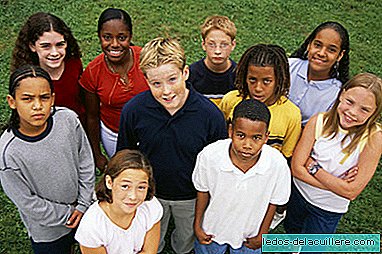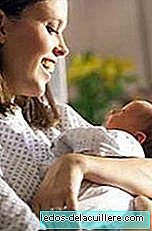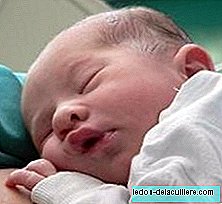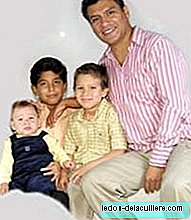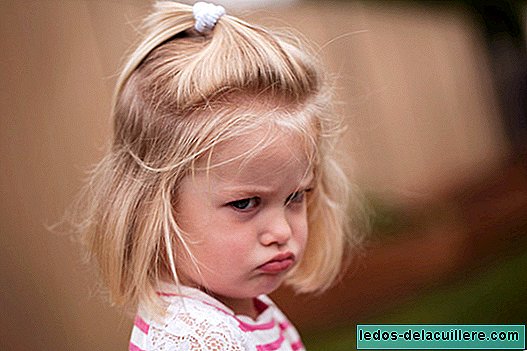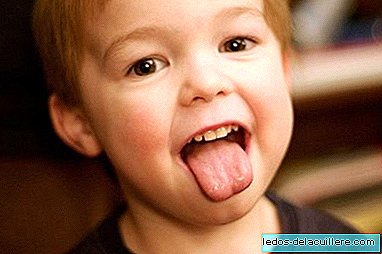
The dislalia It may be caused by different reasons. Today we will see a possible classification in which we will consider the reason for the problem.
In any case (with the exception of evolutionary dyslalia, which is part of a standardized language development process), dyslalia must be treated early and properly, in order to achieve the most beneficial rehabilitation.
We must take into account, however, that at least in some phonemes (not all of them), what in one language or dialect can be considered as a defective articulation, for another it is not (for example, the lisp or the seseo in Andalusia). Here it is not a difficulty as such, but of the social context of each country or autonomous community, which can determine some peculiar forms of articulation.
Evolutionary dyslalia
Is a normal phase of children's language development. In it, the child is not able to reproduce perfectly the words he hears in his daily life. Because of this, he says words incorrectly (for example: "togo" instead of "bus").
Within a normal evolution in the maturation of the child, these difficulties are overcome and only if they continue after four years of life, can they be considered pathological.
Evolutionary dyslalia does not require direct treatment as such, since it is part of the normal development of the child; but it is necessary to maintain with the child an appropriate behavior that helps his proper development and thus avoid future problems, in addition to avoiding a fixation of the defective form, which at that time is normal for him, of pronunciation.
Therefore, it is convenient to follow a series of guidelines that do not reinforce the wrong pronunciation.
Functional dyslalia
Is a defect in the development of language articulation, for an abnormal function of the organs of language (mouth, tongue, palate ...) without there being organic disorders or modifications in the subject (ogival palate, absence of teeth, lingual or labial frenulum ...), but only a functional disability.
The child may be aware, in many cases, that he articulates badly and will want to correct himself and try to imitate the correct speech, but his organs do not obey as easily as he wishes, and they do not find the concrete movement that must be made to pronounce a sound correctly.
It is necessary to know that, the phonemes are the final result of the action of the breath, of the passage of the air by the vocal cords and of the joint. But in these cases there is a disability or functional difficulty in any of these aspects that prevents perfect articulation.
Other times, the child does not perceive his defect by the fixation he has of it, not being able to distinguish the correct ones from the wrong ones.
The cause of functional dyslalia It is very varied, and there may be a series of them that determine the same defective joint effects. In many cases it is not only the determining cause, but these functional abnormalities are due to a combination of factors that are all affecting the child. It is necessary to know the possible causes of each case, since it depends on the most appropriate treatment based on that factor that is preventing the development and normal evolution of the child's language.
In any case, Functional dyslalia is never caused by a lesion of the Central Nervous System, which would cause another series of disorders (to be seen later); where appropriate, it is motivated by an immaturity of the child that prevents proper functioning of the organs involved in the articulation of language.
Some of the causes that can determine the occurrence of functional dyslalia, from higher to lower frequency, are:
- Poor motor ability: There is a direct relationship between the degree of motor delay and the degree of language delay in pronunciation defects, which will disappear while developing the agility and coordination of movements necessary to speak correctly.
- Difficulties in the perception of space and time: language begins to emerge in the child by imitation of movements and sounds. It is very difficult for the former to occur if the child does not have the notions of space and time internalized. The child sees a movement but is not able to differentiate one articulation from another, because he perceives them in a similar way without capturing the nuances that distinguish them due to lack of development of perceptual capacity.
- Lack of understanding or auditory discrimination: Some children have difficulties in acoustic discrimination of phonemes due to insufficient capacity to differentiate from one another; Therefore, the child cannot imitate different sounds. There is a lack of ability to distinguish the intervals between two sounds, the differences in intensity and the durations; likewise, the rhythmic sense is very imperfect. In this case, the child hears well, but badly analyzes or integrates the correct phonemes he hears into his speech.
- Psychological factors: Any affective disorder can affect the language of the child making it fixed in stages prior to that corresponding to chronological age, preventing a normal evolution in its development. A lack of affection, family maladjustment, a problem of jealousy at the arrival of a little brother, the anxious attitude of the parents, the existence of a rejection towards the child, traumatizing experiences due to a disjointed family environment, due to the lack of any of the parents or an accident, can cause a disorder in the development of the child's personality that is reflected in the expression of his language, since there is a continuous interaction between language and personality development.
- Environmental factors: the environment is a factor of great importance in the evolution of the child, which together with the personal elements or abilities, will determine its development and maturation. Many of the psychological factors are caused by unfavorable environmental factors (lack of family environment, cultural level of the environment, bilingualism, maternal / paternal superprotection, rejection, family maladjustment ...)
- Hereditary factors: There may be a hereditary factor that predisposes to an articular disorder, although these cases are less frequent. It can be reinforced by the imitation of mistakes made by family members or the child's closest environment.
- Intellectual deficiency: in these cases you can not speak only of functional dyslalia, but they are more complex problems, where dislalia appears as one more symptom, and as such, it can be treated equally, although in these cases the possibilities of re-education are more limited and conditioned on the child's intellectual capacity.
The symptoms that appear in functional dyslalia are the omission, replacement or deformation of phonemes. The expression is generally fluid, although sometimes by its form it can be made unintelligible if many phonemes are affected.
Children who suffer from this disorder often appear distracted, disinterested, shy or aggressive and with poor school performance. In many cases the child thinks he speaks well, without realizing his own mistakes, and in others, even if he is aware of them, he is incapable of overcoming them, sometimes creating traumatic situations that make rehabilitation more difficult.
Audiogenic dyslalia
A fundamental element in the elaboration of language is auditory perception, being necessary to achieve a correct articulation to possess a correct hearing. If the child does not hear anything, he will not speak spontaneously, and the child who hears in deficit will speak incorrectly.
The child who has an audiogenic dyslalia will have a special difficulty in recognizing and reproducing sounds that offer a similarity to each other, since he lacks the capacity for auditory differentiation. There are also, generally, problems in the voice and rhythm, which will affect the normal rhythm of speech.
The alterations present in the speech of the hearing impaired child, will depend on the intensity of the hearing loss that he has and on the child's ability to compensate for it.
The hearing deficit of dyslalia will be detected accurately with the audiometric examination that will indicate the intensity of the loss. According to the results, it will be seen if the application of a hearing aid that allows the amplification of the sound is necessary and that in most cases will be useful to the child, both for the development of language and social.
Organic dyslalia
They are all those disorders of the joint that are motivated by organic alterations, being able to refer to lesions of the nervous system that affect language (dysarthria) or to speech organs due to anatomical abnormalities or malformations of the speech (dysglossia). We will talk more about these types of alterations later.
Before starting a speech therapy treatment, it is necessary to make a correct diagnosis and prognosis. We must identify what type of dyslalia it is in order to carry out a re-education as appropriate as possible.
Because of its greater incidence, these next days we will talk about the functional dyslalia. And to start, we will comment on different types of errors that occur in dislalia.




